How to Dye a Ripstop Backpack
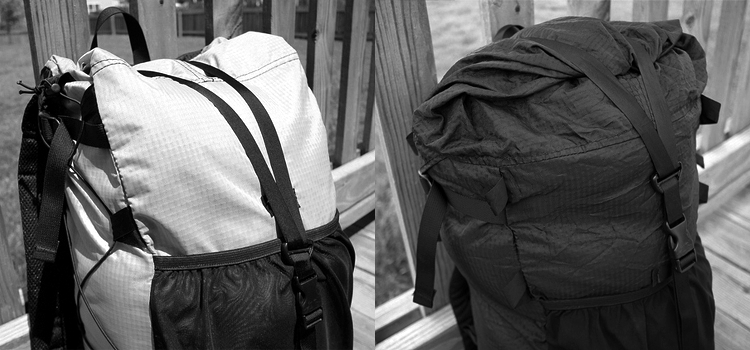
There has been a lot of discussion on backpacking forums and other hiking blogs about the subject of how to dye a (coated) ripstop nylon backpack or whether it can even be done. I love a detailed discussion as much as the next person, but there's usually only one sure way to know whether or not something can be done and that's by actually doing it. If there's one thing you know about me by now it is that I am not afraid to hack and modify my backpacking gear in order to make it serve or function better. There are times though when all you want to do is modify your gear for the cool factor - this is one of those modifications.
The Candidate
It just so happens that I have a lot of backpacks. One of those backpacks, my all-time favorite Gen1 Gossamer Gear Gorilla backpack, is of a suitably light color that would be perfect for a dyeing experiment. Even though I have other packs, my trusty Gorilla pack is still my favorite and I do not intend on ruining it in the name of experimentation. Hence, I will be somewhat cautious.
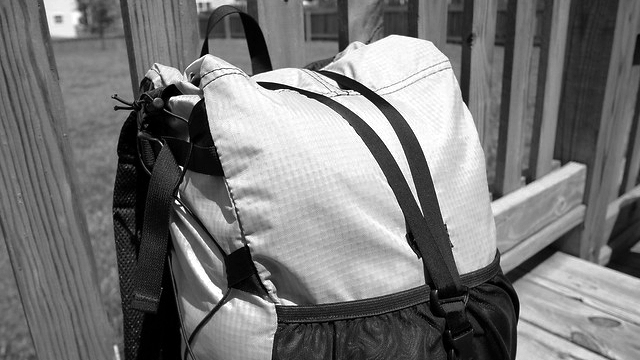
I've used Rit powdered dye successfully in the past for several other DIY projects. It's cheap and readily available in a wide variety of colors. I'm using black to create a very stealthy looking Gorilla backpack. With an expectation that the coated ripstop nylon is going to be somewhat resilient to taking the dye, I'm going to use the whole packet in as small of a container as possible - that should provide me with an intense mixture to maximize coverage and absorption. In theory.
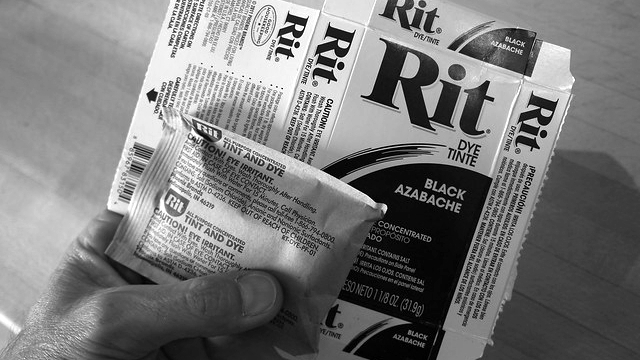
Stovetop Dyeing Instructions
There are many different techniques for dyeing materials using Rit dye, their website contains a wealth of information. I'm going to be using the the "stovetop" technique because it is said to deliver the best results when using black or other dark colors. I'm using a large stainless steel saucepan big enough to accommodate the Gorilla pack when scrunched up.
Before I get started I need to remove hip belt and cordage as neither of these need to be part of the dyeing process. I also need to remove the internal frame/stay so that the pack can be bundled up. I'm also going to turn the pack inside out - I don't know why, it just felt like the right thing to do.
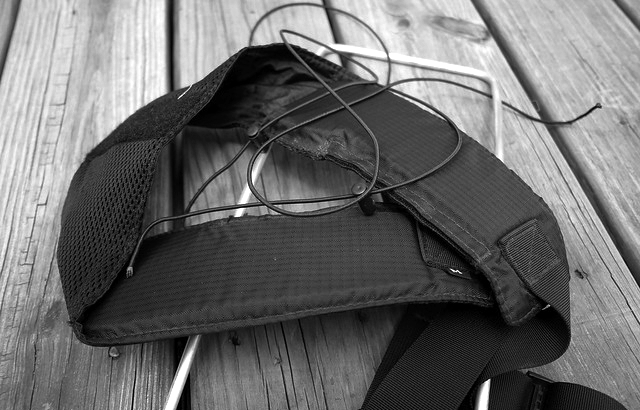
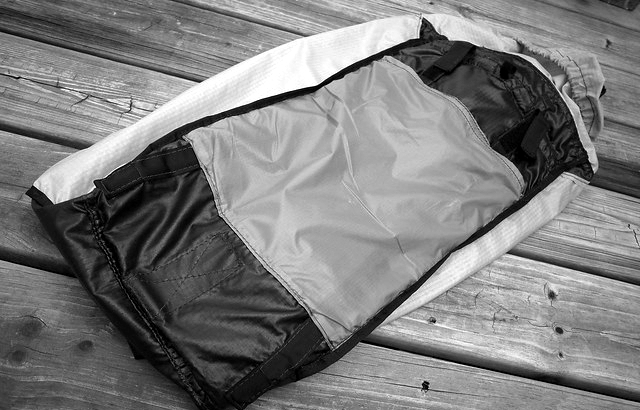
I filled the large saucepan three-quarters full and brought it to a simmer on my stove. The Rit dye instructions say to pre-dissolve the powdered dye in two cups of hot water and then add it to the dye bath. I decided to skip this steps and poured the whole packet into the large pot of warming water and stir while letting it come to a simmer.

The Point of No Return
Once the dye bath had come to a steady simmer and after a few extra minutes of stirring to ensure the powder was adequately dissolved, I carefully began submerging the Gorilla backpack. You have to be careful not to force the pack into the saucepan too quickly because the air inside the pack will not escape fast enough to avoid forcing the simmering black liquid dye up over the edges of the saucepan. I took my time and let the air escape and the dye absorb into the nylon fabric of the pack.
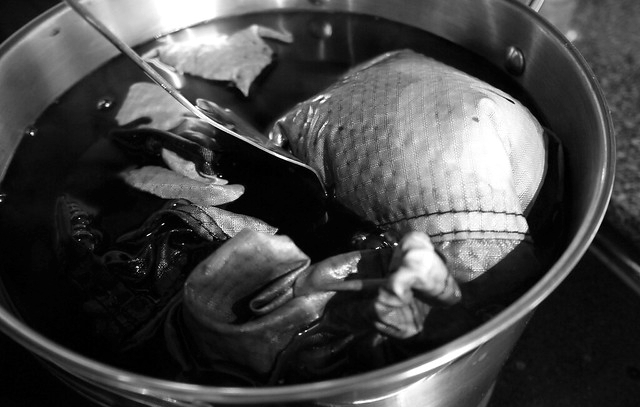
If you look carefully at the photograph above, you'll se that despite the pack having already been submerged in the dye bath, it has hardly colored the nylon material at this early stage. The Rit stovetop instructions recommend simmering the material in the dye bath for 30 minutes, stirring constantly, up and down. Good things come to those that wait - patience.
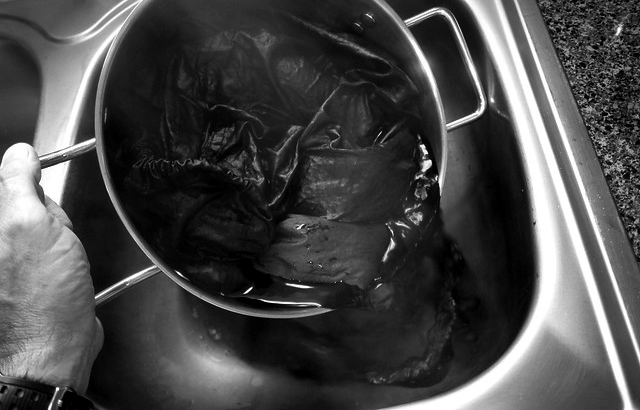
Rinse and Repeat
After draining the saucepan and removing the Gorilla backpack I could finally see just how well the dye had worked on the ripstop nylon. I have to admit that I thought this wasn't going to work at all. When I saw how resistant the nylon was to absorbing the dye bath when I first submerged it I thought this was going to turn out badly. It actually turned out extremely well and the darkness of the black is better than I had expected.
I rinsed the pack in cold water several times to remove as much of the excess dye as possible and until the water ran clear. Then I put it in my washing machine for another rinse cycle. Finally I put the pack in the dryer on a hot setting to "fix" the dye and dry out the damp backpack.
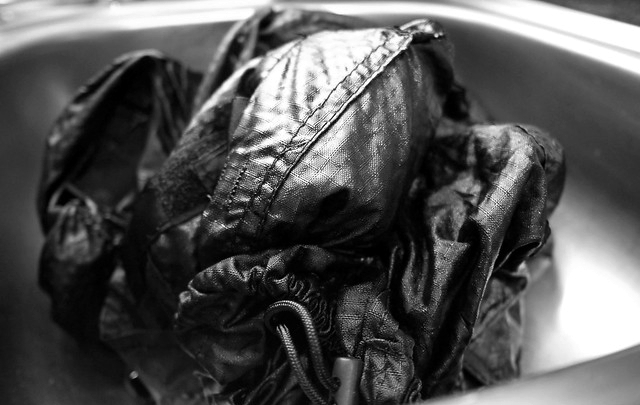
Stealthy Gorilla Backpack
Here are a few photos to show how well the custom dye job turned out. If you look carefully you will see that the parts of the Gorilla pack that were originally black, like the harness and mesh pockets, are a much darker shade of black than the light gray ripstop nylon sections. I don't know if that's because the lighter material didn't dye as well or if the already dark/black pieces got even more black. Blackerer as my kids would say.
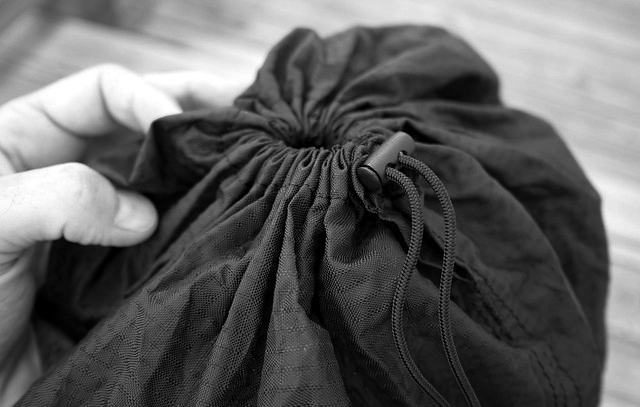
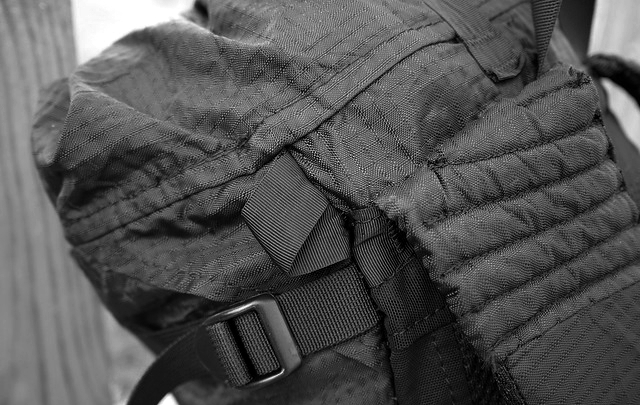
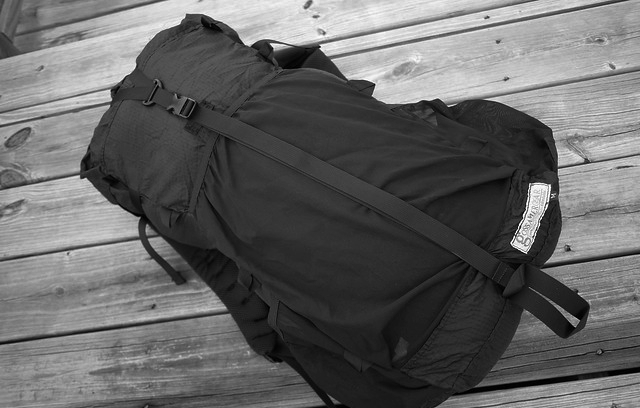
So there you have it. It is definitely possible to change the color of a ripstop nylon backpack using Rit dye. I have not tested the backpack to see if it has lost any of its ability to repel water. I suspect that it has, but that's an easy fix and not all that important if you pack using a liner.